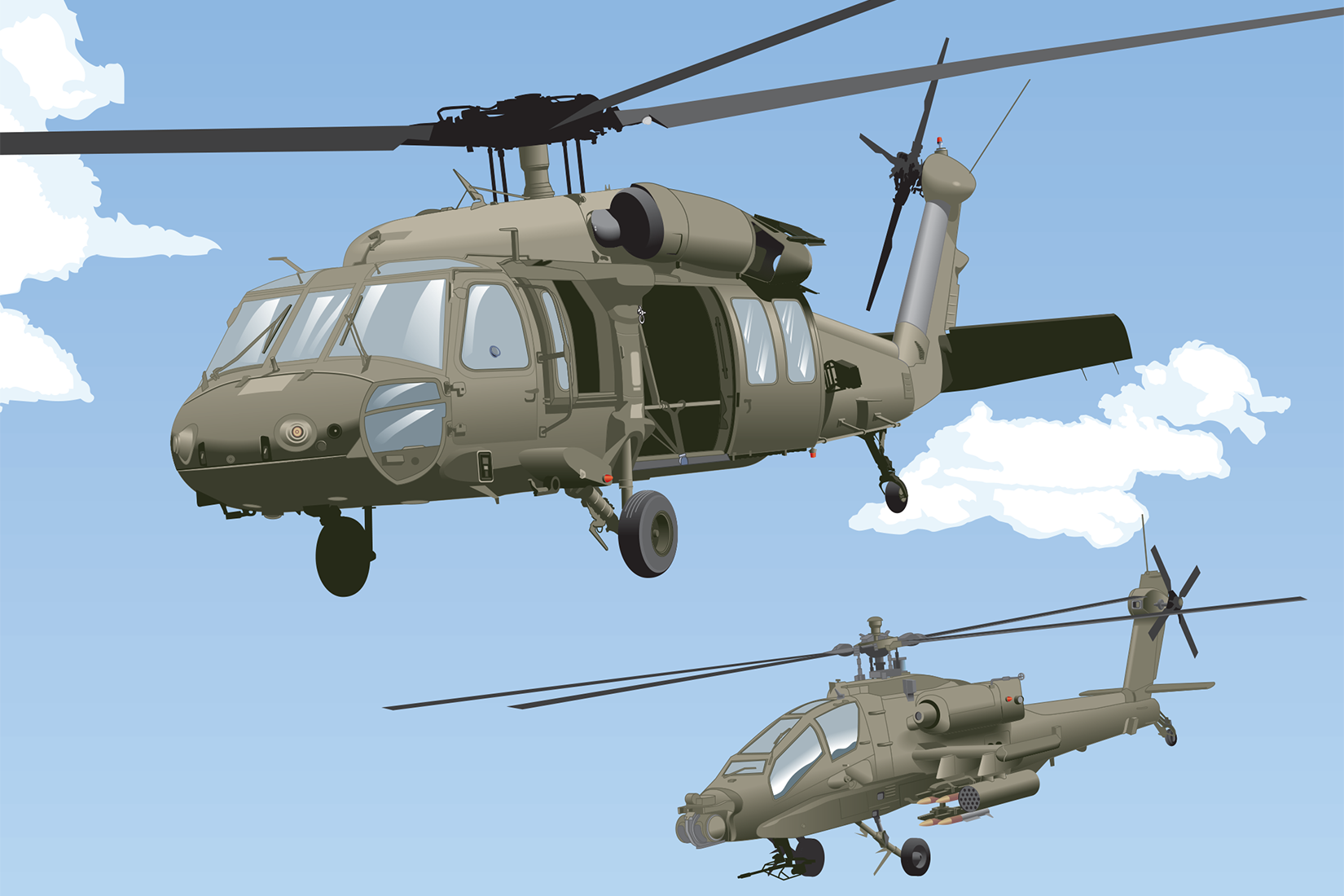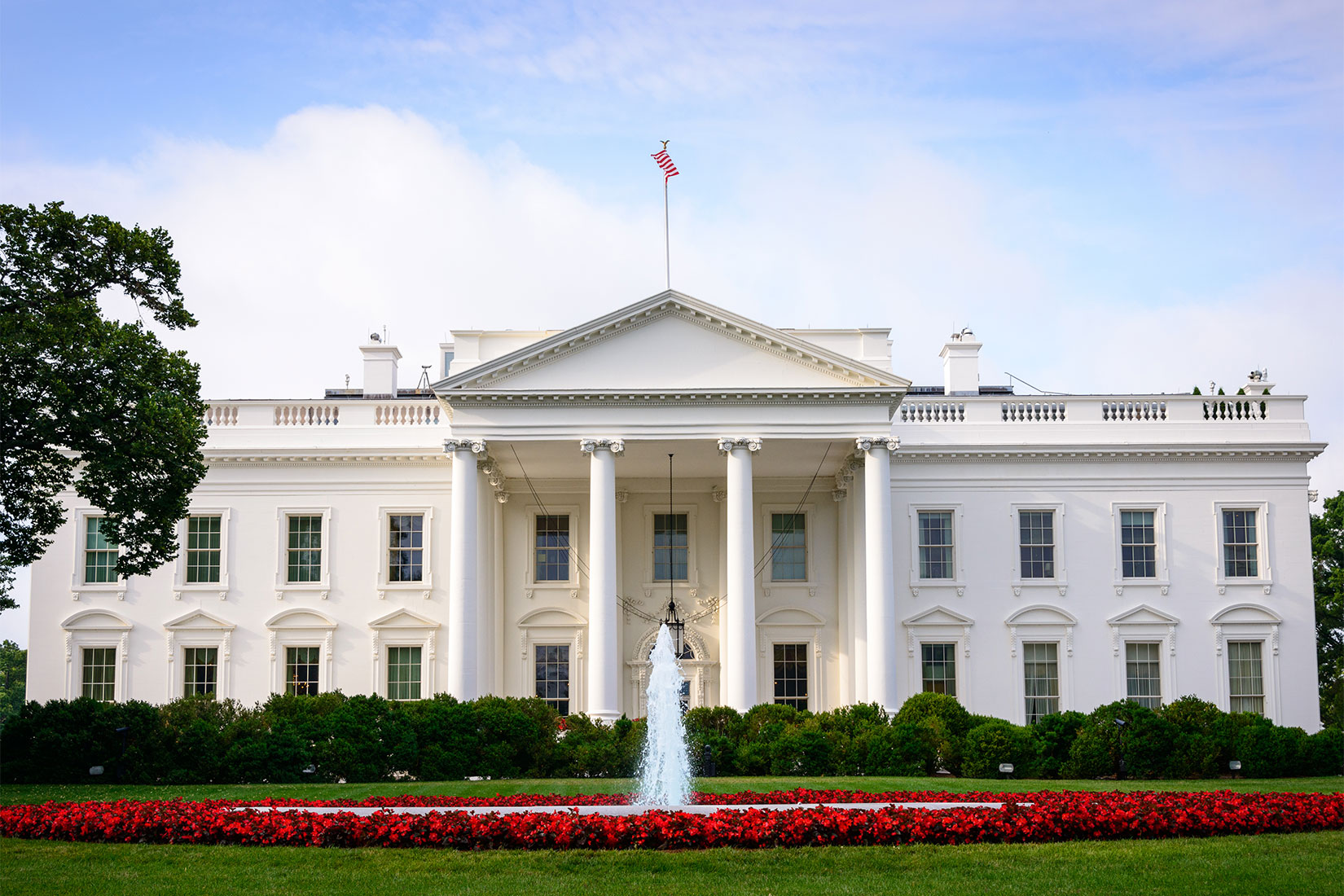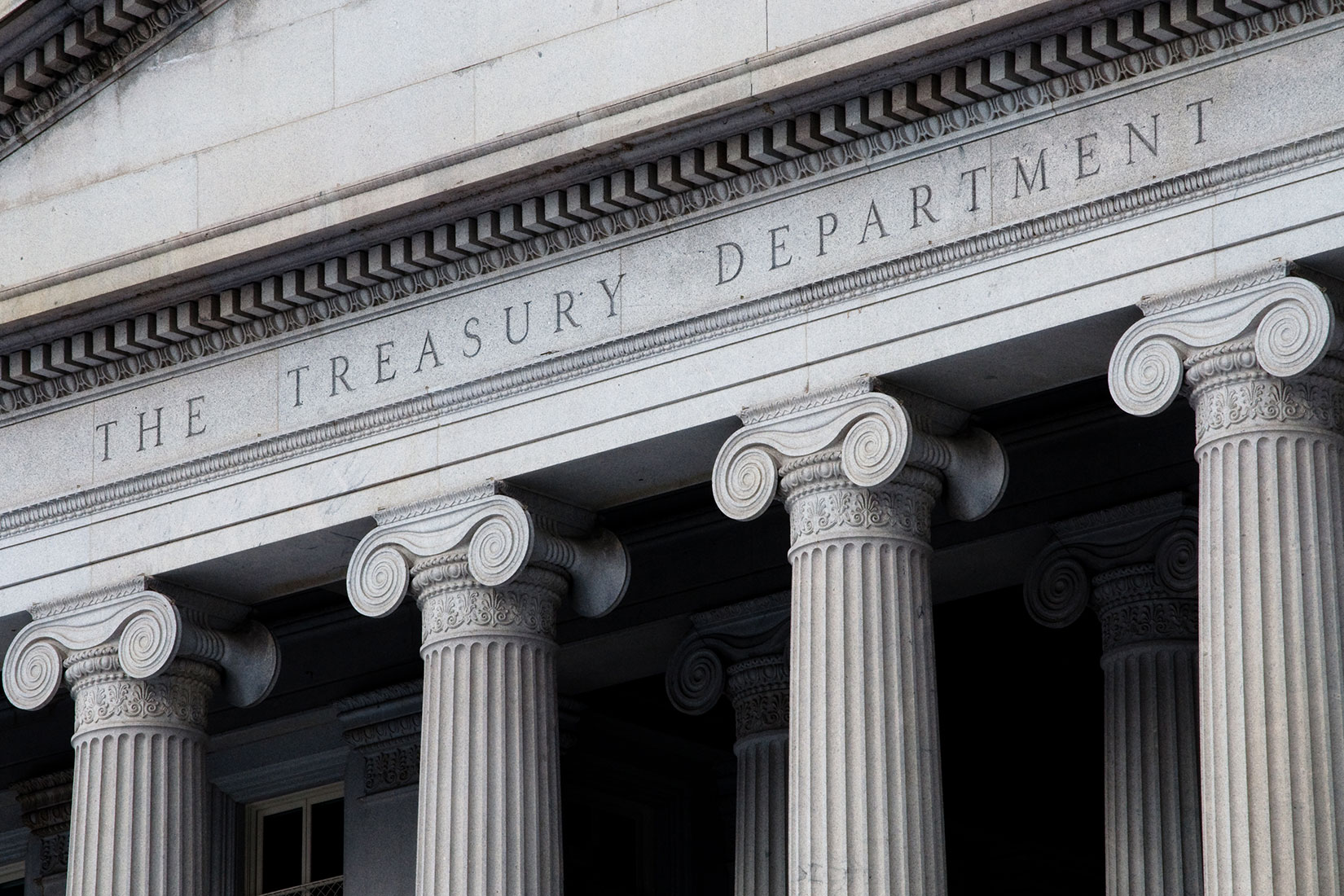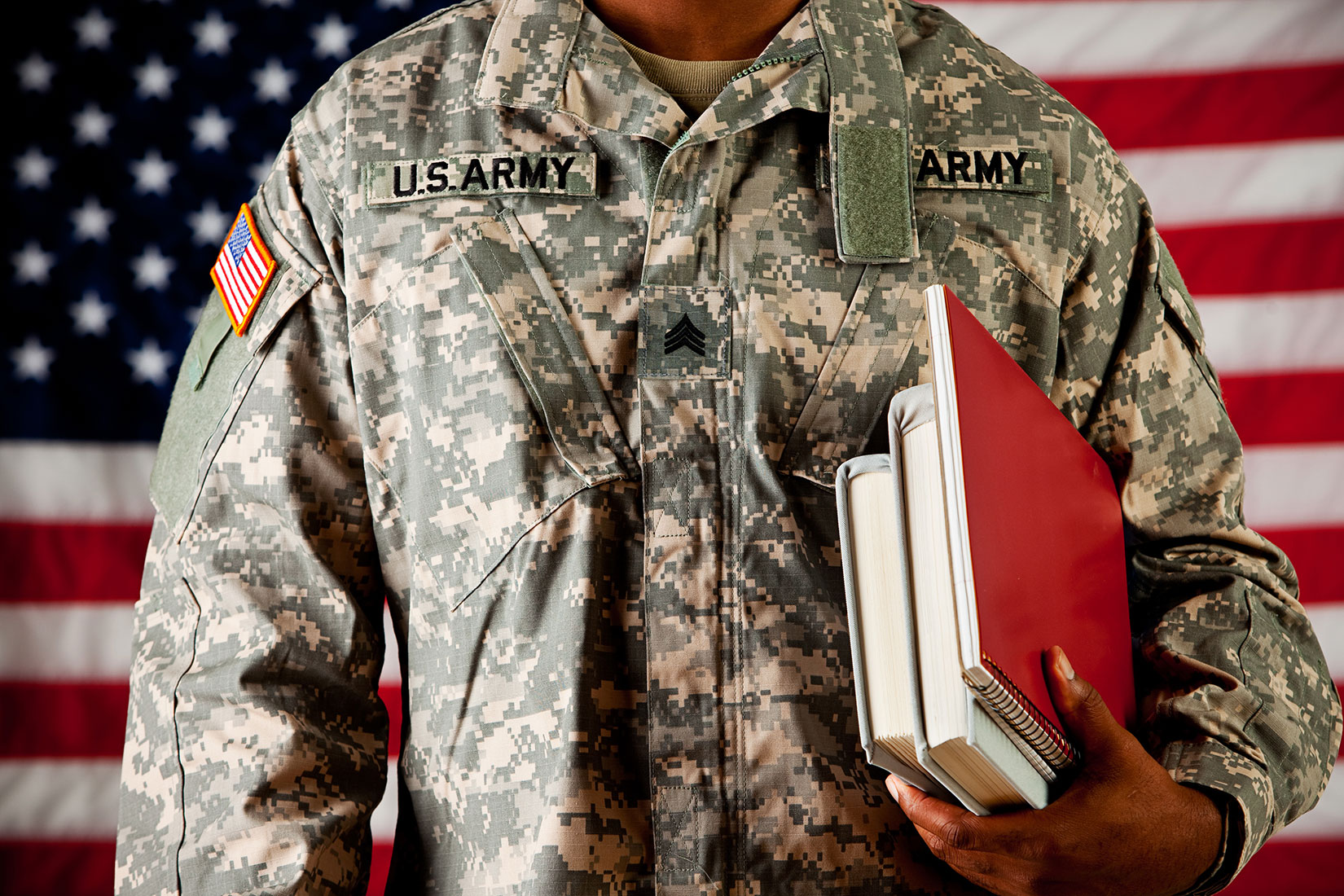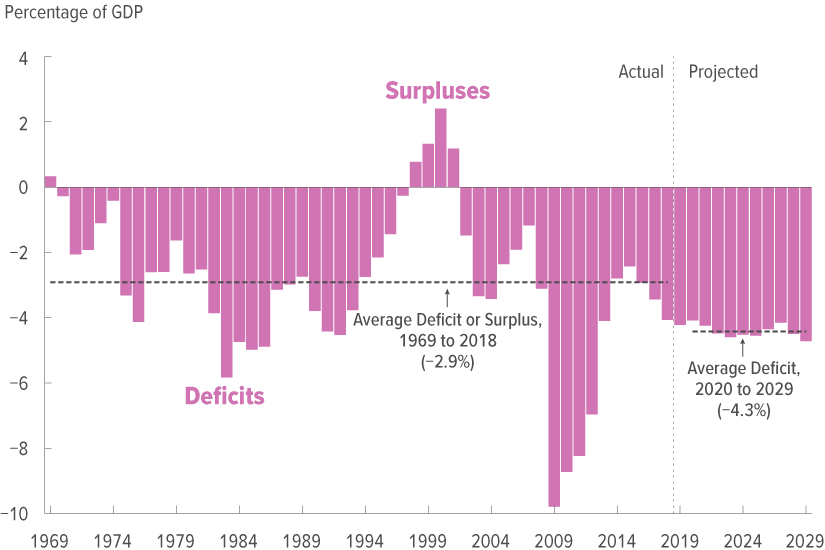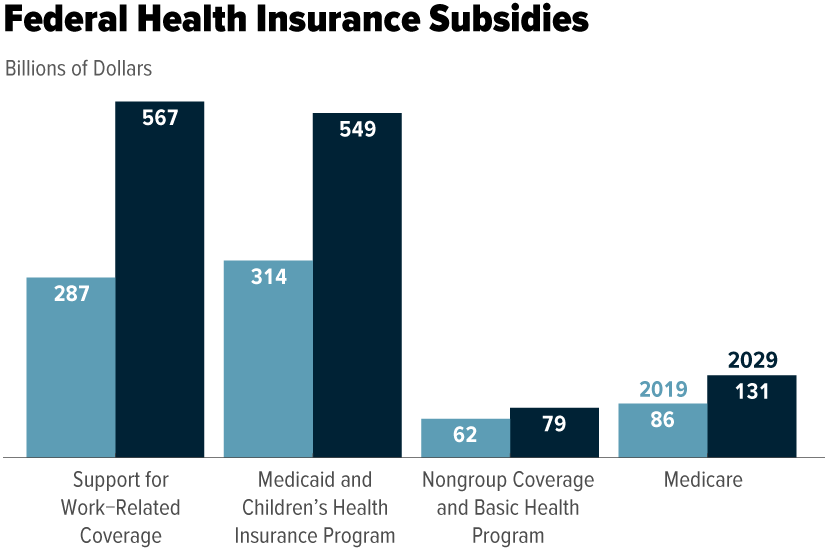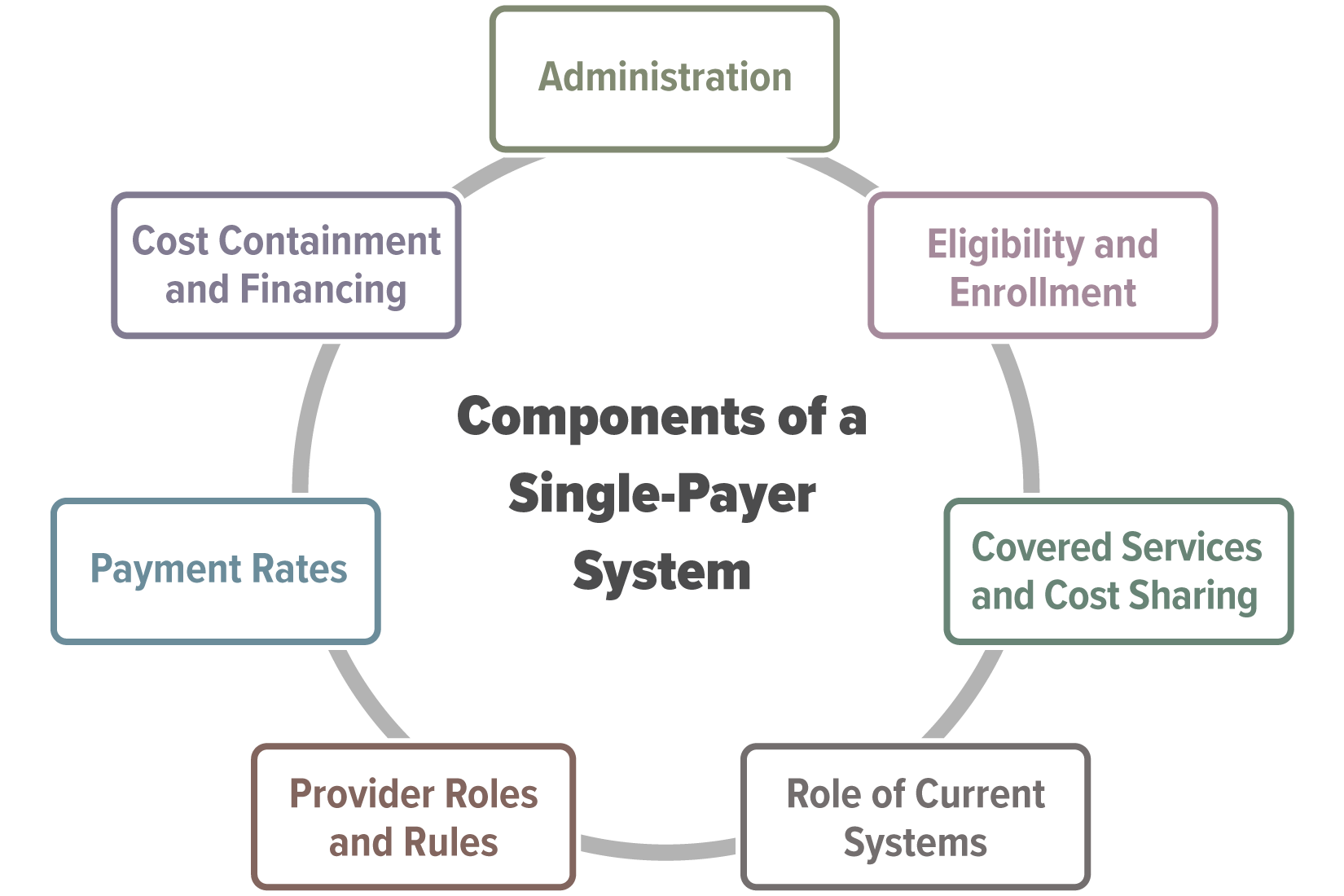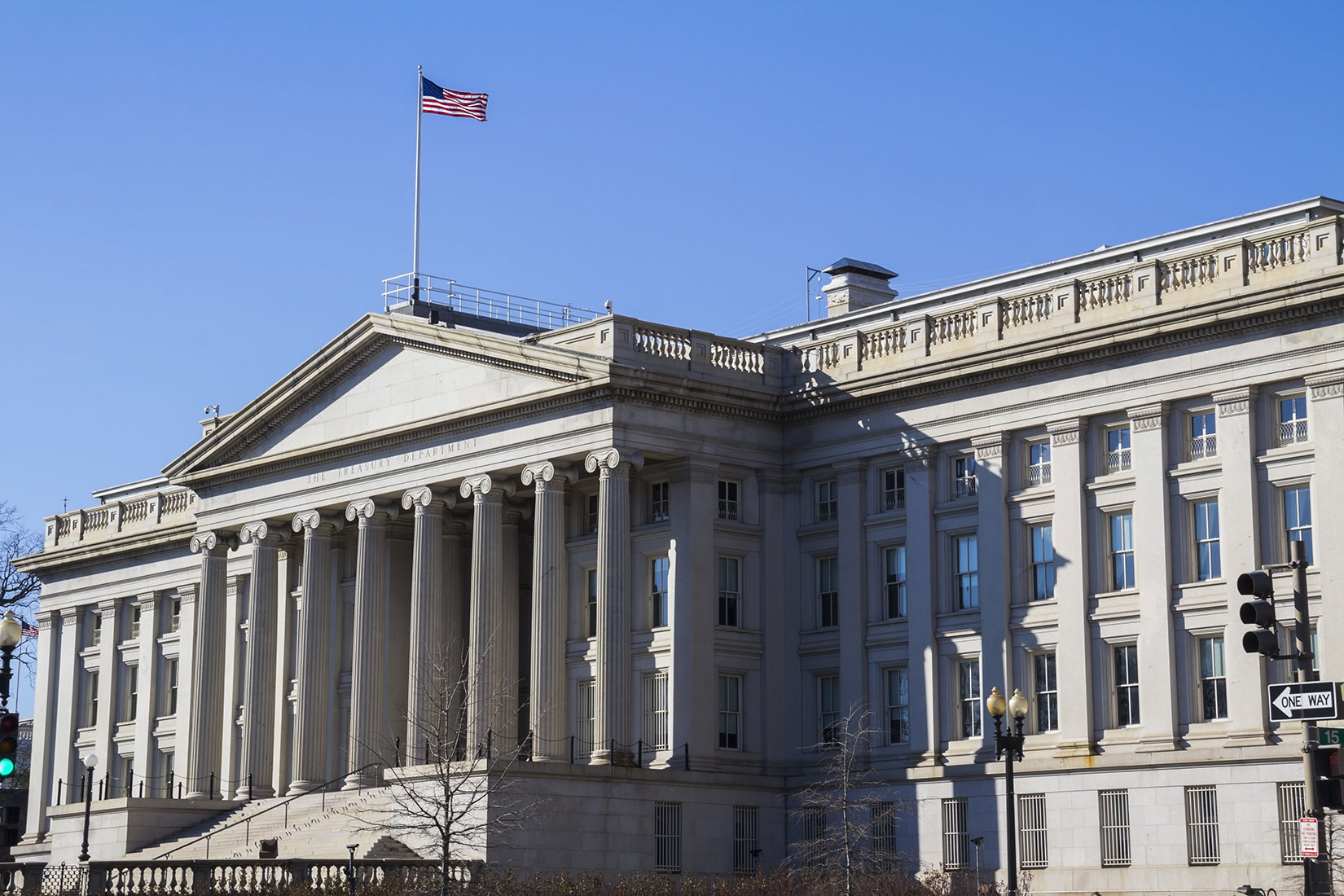The annual costs of replacing the Army’s aviation fleet would decline during the 2020s, from about $4 billion in 2018 to about $1.5 billion in 2027, and then rise to a peak of about $4.7 billion in 2032 before drifting downward again.
CBO Blog
Under the President’s proposals, deficits would total $9.9 trillion over the 2020–2029 period, $1.5 trillion less than the deficits in CBO’s current-law baseline. Federal debt held by the public would increase from 78 percent of GDP in 2019 to 87 percent in 2029.
CBO estimates the added personnel requirements and costs of five kinds of military space organizations. DoD wants to create three, which could increase annual costs by $1 billion to $2 billion and require onetime startup costs of $2 billion to $5 billion.
The federal budget deficit was $531 billion for the first seven months of fiscal year 2019, CBO estimates, $145 billion more than the deficit recorded during the same period last year.
From 2010 through 2016, the Veterans Benefits Administration spent $65 billion on educational benefits for 1.6 million veterans, spouses and children, mostly for veterans’ tuition, fees, and housing. In 2016, VBA spent an average of $17,400 per beneficiary.
Overall, our baseline budget projections, which reflect the assumption that current laws generally remain in place, have changed little since January, when we released The Budget and Economic Outlook: 2019 to 2029. In our projections, federal debt continues to rise from its already high level because of persistently large budget deficits.
CBO projects a deficit of $896 billion for 2019—$1 billion less than the deficit it projected in January. Federal debt held by the public is projected to grow from 78 percent of gross domestic product in 2019 to 92 percent in 2029.
CBO and JCT project that federal subsidies, taxes, and penalties associated with health insurance coverage for people under age 65 will result in a net subsidy from the federal government of $737 billion in 2019 and $1.3 trillion in 2029.
This report describes the primary features of single-payer systems, and it discusses some of the design considerations and choices that policymakers will face in developing proposals for establishing such a system in the United States.
CBO estimates that the net cost of the TARP will total $31 billion—$1 billion less than it estimated in March 2018 because of a decrease in projected disbursements for mortgage programs. Almost all of the TARP’s transactions have been completed.


